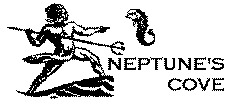Wreck of the Frank O'Connor
| Site: |
East of Cana Island Light |
| Depth: |
35'-70' |
| Vis: |
15'-40' |
| More Info |
|
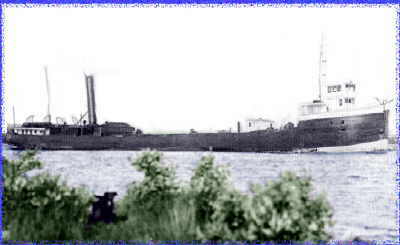 |
The Frank O'Connor is the larger sister of the Bulk Freighter
Fedora (301' vs. 285'). It was built in 1892
in West Bay City, Michigan by the company of F.W. Wheeler and commissioned as the City of Naples. It was rebuilt in 1904,
when it was renamed the Frank O'Connor. The Frank O'Connor was one of the largest wooden Bulk Freighters ever built, it was
also one of the last. The builder was one of the last to use wood, bulk freights of this time had been built
of steel for a while.
It's primary cargo was coal, which it was carrying over 3,000 tons of it when it caught fire off of Door
County on 02 October 1919. The 21 crewmen were rescued by personnel of the Cana Island Lighthouse, but the
vessel itself burnt to the waterline. It then sank in about 70 feet of water after drifting northward, away
from the light house. It was "found" in 1922, when 700 tons of it's cargo were salvaged.
She was relocated by Lynn Fredickson of SeaGrant in late 1970's. But the location was lost again. It was
"found" again years later by Chicago area diver Sam Mareci. Since then, it has been one of the
Door County's favorite dive sites. Part of the reason it has been lost so many times is area it is in,
Parker's Reef. The wreck sits in a valley in about 65'-70' of water. The area has a large number of huge
boulders. The only portion of the wreck that shows up on SONAR as wreck, is the boiler. It comes to within
35' of the surface. If you don't find the boiler; you probably won't find the wreck.
By mid-June the Frank O'Connor is usually buoyed or marked on the boiler. The dive starts with a short
trip down the buoy line to the top of the boilers in 35' of water. Visibility is usually pretty good
for the area, 20'-40' (this is Great Lakes diving). The good visibility and shallowness at the start of
the dive make this a good dive for area beginners.
The dive continues by descending down the boilers to about 60'-65'. You can spend the rest of your dive
swimming around the boilers, the huge triple expansion engine, and the plumbing linking it all together.
Or you can head for the aft end and look at the prop. If you put your depth gauge on the sand at the base
of the prop, you will get 70'. Swimming back toward the engine, you will see numerous artificates; enjoy
them but LEAVE THEM THERE, IT'S THE LAW.
An alternative to seeing the prop, if the current is not to bad that day, is a long swim to the bow
(remember, the Frank O'Connor is over 300' long). You will see numerous artifacts, a donkey engine, a
large standard anchor, a huge mushroom anchor, lots of chain, ... You will either have a pleasant drift
to the bow or a good swim (there is almost always some current), so watch your air and plan to view the
bow first. If your lucky you will do some work on the way to the bow and drift back. I usually swim down
the center line (this is where most of the machinery past the boilers is) and drift back just off the
port side (lots of artifacts to see).
You will probably notice some back scatter in most of these pictures. All were taken with 12mm-15mm lenses
with flash. In most cases the visibility was in the 30'-75' range. Why the backscatter? First the overhead
lighting was less the perfect (1997 wasn't our best year for diving weather) and second, everything at this
dive site is HUGE. You are pushing the flashes and lenses to the max in an attempt to get the subject in
the picture and properly illuminated. You'll see this for yourself if you come up to Door County and dive
the Frank O'Connor.
Enjoy.
|
Wild Gales and Tatterd Sails by Paul J. Creviere, Jr.
Divers Guide to Wisconsin by Steve Harrington
|
Underwater Photographs
from the
Wreck of the Frank O'Connor
|
| Part of the triple expansion steam engines works. |
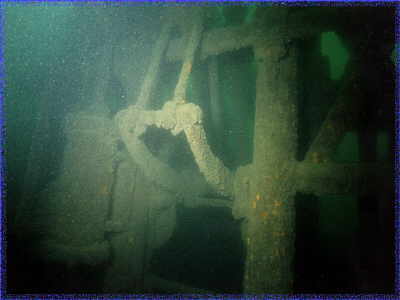 |
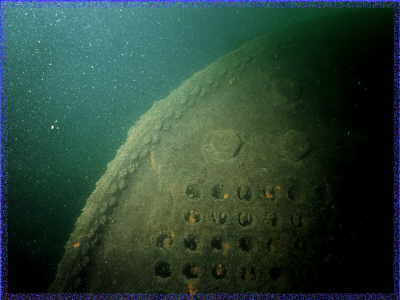 |
Close-up of the back of the boilers. |
| Close-up of the front of the boilers. |
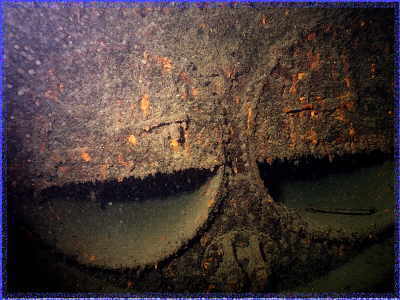 |
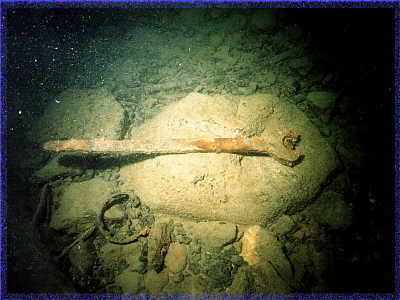 |
4 foot wrench for working on engine. |
| Diver between the boilers. |
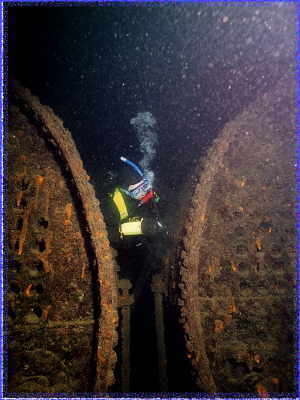 |
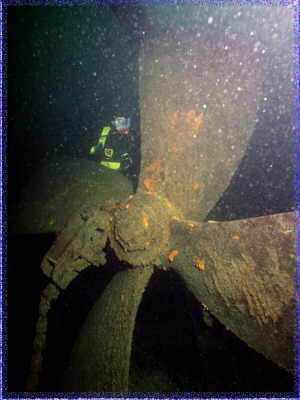 |
The Frank O'Connor's Prop. |
| Close-up of some of the engine's plumbing. |
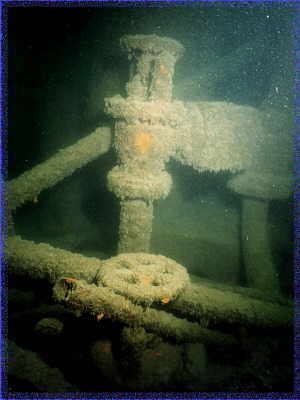 |
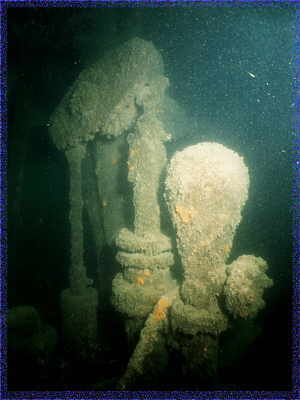 |
An emergency hand pump. |
| Donkey engine(?) on the Frank O'Connor. |
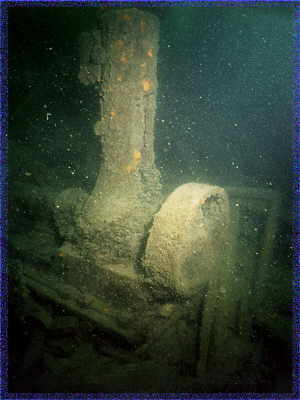 |
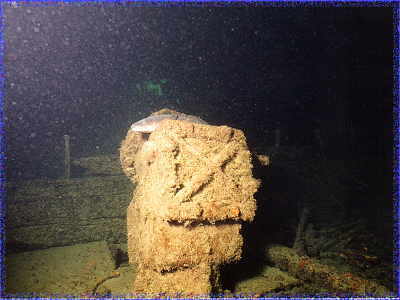 |
Control Station. |
| 4 foot wrench for working on engine. |
 |
|
